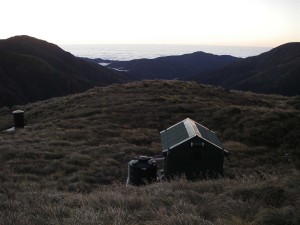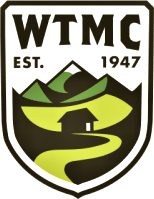 As I write, we’re working on the winter trip schedule, with a planning meeting held at club last week. I’d like to thank the dozen people who turned up to enjoy some pizza and develop trips for each roadend. Using this kind of collaborative process is a great way to make sure that the schedule delivers trips that members are actually keen to do. If you didn’t get round to participating this time but have some useful thoughts (or if you want to be included on the trip planning email list), please drop an email to chiefguide@wtmc.org.nz.
As I write, we’re working on the winter trip schedule, with a planning meeting held at club last week. I’d like to thank the dozen people who turned up to enjoy some pizza and develop trips for each roadend. Using this kind of collaborative process is a great way to make sure that the schedule delivers trips that members are actually keen to do. If you didn’t get round to participating this time but have some useful thoughts (or if you want to be included on the trip planning email list), please drop an email to chiefguide@wtmc.org.nz.
We did have an outdoor first aid course and a leadership instruction course planned for April. But we’ve had to postpone both of these courses due to lack of participant numbers. The intention is to put them on the winter schedule, probably in September, and to combine both at one venue to make it easier to get the requisite numbers. If you are interesting in registering your interest for either of these courses, please drop me an email.
The end of daylight saving is nearly upon us and I’m sure you’ve noticed the commensurate drop in available daylight hours. Having perhaps 10 daylight hours for tramping contrasts sharply with having more than 16. Because of this, and because of harsher weather conditions, we do grade trips slightly differently in winter. For example, the trip in the northern Tararuas to Mangahao Flats hut is a EM in the summer but an M in the winter. The difficulty of the trip is not massively different but the margin for error is.
This time of year also marks the last opportunity for epic-style summer trips. On my past two trips, we’ve got up in the dark at 6am in order to be away by 7 and gain maximum daylight hours. Perhaps it’s a personal weakness but I always feel like stopping about 5pm no matter what time I started, so early starts make good sense. On a recent weekend we were up at Arete hut before dawn and saw an amazing cloudless Tararua sunrise, complete with red glow illuminating our upcoming route. Bannister is one of those ridges that looks gnarly from a distance, particularly when you’re traversing around from Herepai to Dundas or Arete, as we had the day before. Luckily Saturday’s clag had hidden that view, though I could recall it from journeys past. We had a rope, as recommended by the hardcore (and sadly out of print) Tararua Footprints, but were hoping it would prove irritating ballast (not that I was carrying it!). A friend had described this part of the route as being worse than the Broken Axe pinnacles, which was of slight concern. But during the supposedly problematic section from Bannister to Waingawa, we kept wondering when the difficulty would appear. There was one part where I passed down my pack but the consequent downclimbing was easy and short. I suspect that without that anticipation of difficultly, it would have seemed even more straightforward. Having now done all the well known “scary” bits in the Tararuas, I’d suggest that none particularly deserve their reputation – nor any counterproductive nervousness in advance.

